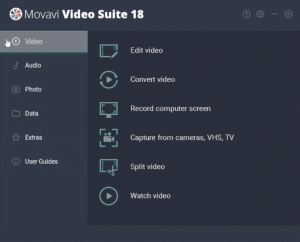— May 31, 2018
There it is again. Another notification from Yelp that someone’s left you a review.
At this point, you dread even swiping right to read it. Maybe you’ve been getting some negative feedback about a product you just released. Or your new policy is seeing some resistance from loyal customers.
You’re doing the best you can to smooth their ruffled feathers, but now those two star reviews are showing up when people search your business online.
Do people really read these bad customer reviews? Of course. Do they influence their opinion on your business? You betcha.
In fact, 86% of people hesitate to purchase from a business with poor reviews and a bad online reputation.
Eighty-six percent! Wowzah. That must be why your sales have taken a hit this past month.
Here’s four ways bad customer reviews can negatively affect your ranking on the search engine results pages (SERPs), and likely, your sales as well:
1. A Lack of Google “Stars” on the SERPs can Ward Off Clickers
When you Google search a business, their Knowledge Graph is usually the first thing you see. This is especially true to mobile searches, where the information box takes up the whole screen.
This graph shows useful information about the company such as their website, hours, phone number, their menu if they’re a restaurant and more. If your business has enough Google+ reviews, it’ll display three reviews here as well.
You’ll see a big, golden score from 1-5 with matching “stars.” These stars stand out to users, who usually gravitate to sites with 3.5 to 4-star ratings or higher. Actually, 92% of users tend to use a local business if it has a 4-star rating or greater.
Not only do the stars work as judgement shortcuts for searchers, but the Google Knowledge Graph will also preview two lines of text from the review, bolding important keywords or phrases.
That’s great for highlighting good reviews, but it basically magnifies the bad stuff on negative reviews. Usually Google will serve the three reviews with the most interaction, meaning the ones with the most responses or likes; and oftentimes, these are the negative ones you’d like to hide the most.
Searchers will rely on this customer feedback as initial speculations about your business and tend to click less on websites with poorer Google ratings. In fact, according to a study by BrightLocal, improving your ratings from a 3-star rating to a 5-star rating could earn a business 25% more clicks.
What’s really astounding is that if a business has 3-stars or less, they often receive even fewer clicks than businesses with no star ratings at all! This really shows the impact negative reviews have on your online reputation.
Facebook and other review platforms like Birdeye also display stars next to their website’s SERP links, so ratings there can affect you too.
If your traffic has decreased as you’ve received more negative reviews, your low star-ratings could be why people aren’t clicking on your business link.
2. Negative Comments on “Travel Apps” Deter Walk-Ins
Most people have used Yelp or TripAdvisor while traveling. These helpful mobile apps make it easy to find local attractions by category, like “Things to Do” or “Restaurants,” pulling your current location and serving up nearby business suggestions.
Although not all 5-star attractions rule the results, these travel-friendly apps traditionally rank the 3 through 5-star businesses in the top positions. They consider your proximity from your IP, as well as its number of ratings and average score.
In any search game, the stars still matter; but with decision-stage “local” searchers on travel apps— what people have to say matters more. Searchers want detailed customer feedback, as often times, they are looking to go to this place immediately.
For walk-ins, what Sally S. from Fort Myers had to say about her experience is what could influence their decision to step through your door, or into your competitor’s instead.
Rather than obsessing over your stars on applications like Yelp and TripAdvisor, focus on facilitating positive reviews and responding appropriately to the negative ones. Remember, you can’t control what people write about you online, but you can control how you respond to it and, consequently, shape your brand voice.
We have some tips at the end of this article for replying to bad reviews to help you turn mistakes into opportunities for growth and show curious local searches that you’re problem-solvers!
3. Poor Reviews Often Cause a Decrease in Sales
When it comes to ready buyers, they’ve likely researched their choices before adding to their shopping cart or visiting your establishment.

When prospects are about to convert into customers, they often purposefully seek out bad reviews. And that makes sense! They’re making heavy comparisons between you and the next best option. If the product or service is similar, what people have to say about you starts to validate the better choice
Because of this, your online reputation affects buyer’s final purchase decisions, which is especially true for big dollar items.
This executive study found that online reviews influence pretty much all purchasing decisions; however, more expensive, “riskier” investments showed the most reliance on positive reviews.
If you’re seeing a decrease in sales because of bad customer reviews on page one of the SERPs, consider listening to their feedback and making changes. Oftentimes, there’s some merit to their complaint.
So, we’ve included a few helpful ways to turn your poor press into positive communication.
Best Practices for Responding to Negative Customer Reviews
When it comes to replying to bad reviews, stick to some of the basics:
- Respond quickly with empathy. // The customer will likely become angrier if ignored, so responding within a few hours of them posting shows you care and consider resolving their issue a priority.
- Admit when you goofed and apologize. // If you or your team made a mistake, own up to it. People are human and we mess up sometimes. That’s okay. What’s not okay is trying to shift the blame to the customer or making excuses for something within your control. The customer will likely deflate once you claim the shame and extend a sincere apology.
- If an employee was the problem, ask them to send the distraught customer a private apology. // People often identify your employee as the enemy and expect a higher-up to reprimand them. Even when a manager apologizes for the situation, an angry customer might still be pretty peeved with your employee. When appropriate, have the apology come from the source. Taking the time to consult with your employee reveals to the customer that you addressed the problem with humility.
- If possible, take the conversation offline. // You don’t want the customer to assume you’re trying to hide the problem from curious online eyes, so instead of asking them to private message you, recommend a phone call or invite them into the office to share the full story. Clarify that you that you want to hear all about it and need more details to ensure this doesn’t happen again.
Get More Positive Reviews, Authentically and Consistently!
Maybe you don’t have as many reviews as you’d like, so the few negative ones are making you look downright awful. You need to bring in a variety of reviews to reflect your strengths too.
Lucky for you, we offer some recommendations for getting customer reviews in our free Beginner’s Guide to SEO ebook.
Still not convinced you need reviews at all? It might seem easier to just hide negative customer feedback. Unfortunately, that’s not going to mean good things for your rankings.
Digital & Social Articles on Business 2 Community
(108)
Report Post






